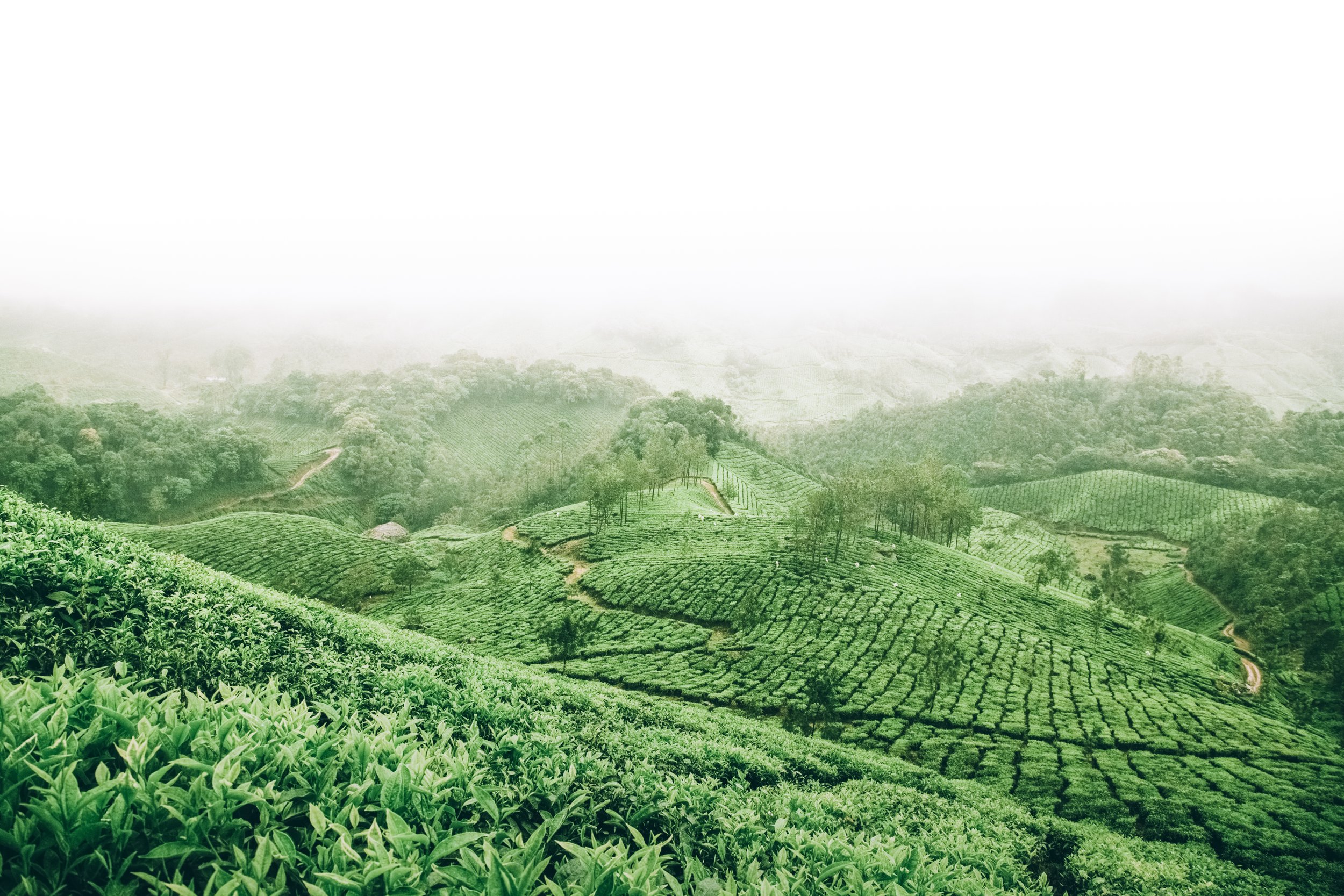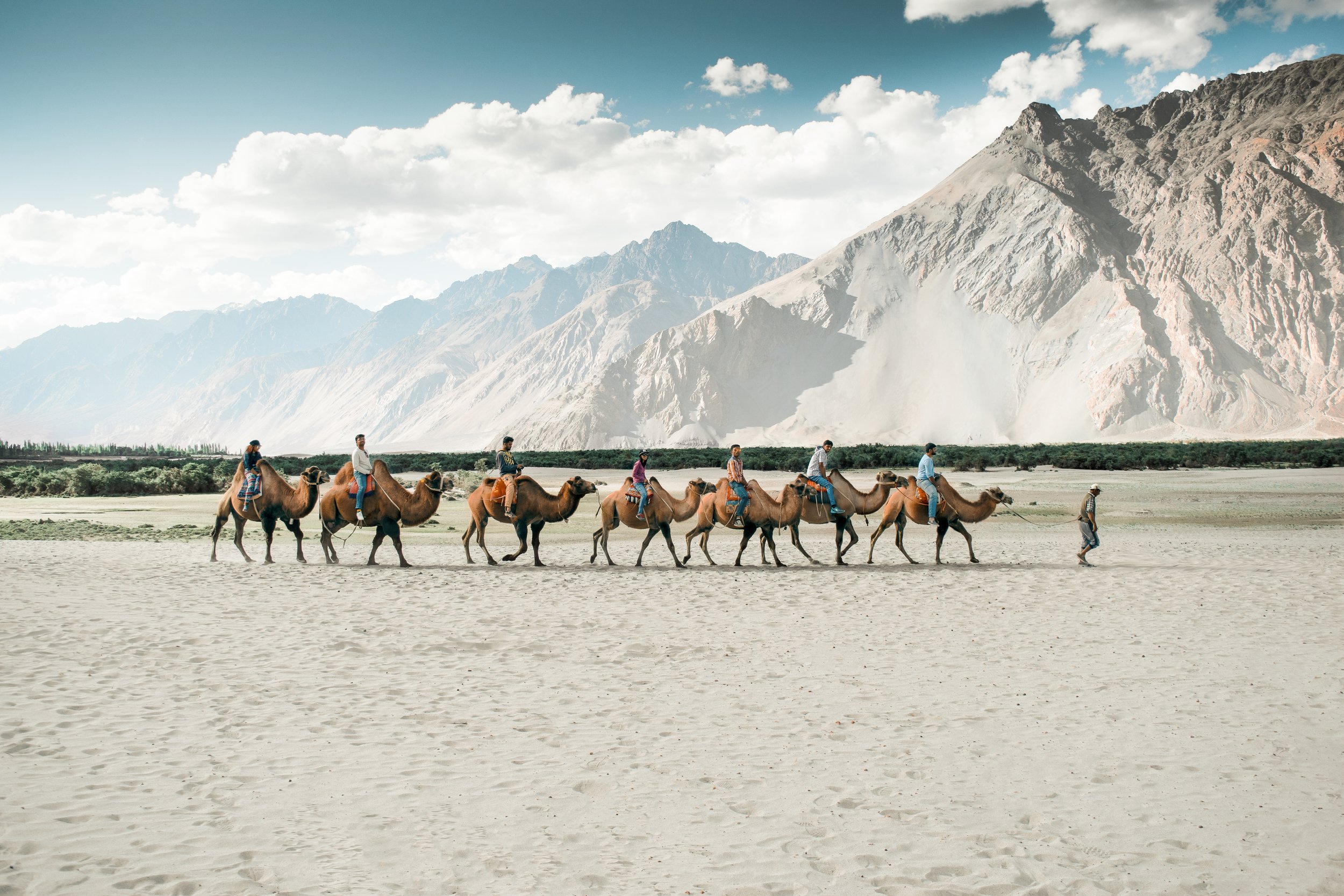North India
North India
Renowned for its vibrant colours and emblematic architecture, North India has drawn travelers to its palace-strewn cities and captivated the minds of storytellers for millennia.
On the holiness spectrum, North India encompasses several of the most important pilgrimage routes and religious centres in the Subcontinent, creating a holy crossroads for the country's main religions. Hindus crowd the river banks of Varanasi, wade through the waters of Lake Pushkar and marvel at the grandeur of Akshardham Temple. Buddhists come to meditate under the Buddha's tree of enlightenment at Bodhgaya's Mahabodhi Temple. Sikhs flood the hallways of the Golden Temple in Amritsar. Muslims pray in the grand mosque of Jama Masjid of Delhi and the many sacred shrines of Rajasthan.
Along with its deep-rooted spirituality, North India has an extensive history that is crystalized by an array of architectural wonders and defined by longstanding social constructs and cultures. The Maurya Empire established its grounds as early as 326 BCE, followed by dozens of civilizations, ending with the British Indian Empire in 1947. The Mughals—the masterminds behind the most impressive structures in northern India, left behind some of the most beautiful manmade constructs, including the Taj Mahal and Akbar's Palace in Fatehpur Sikri. Rajput clans built forts and kaleidoscopic palaces along the route to the Thar desert, across the state of Rajasthan.
Although many powers have conquered India over millennia, none have proved immune to its capacity to reverse the current of colonization and to mold its subjugators. India's vastness and impressive cultural resilience effortlessly absorbs the influence of its foreign conquerors and resolutely stands its own with an unwavering sense of tradition and identity.
Delhi
Having served as the capital of various kingdoms and empires, Delhi's relentless rhythm is dominated by ancient bazaars, amazing buildings, vast gardens and delicious cuisine. Numerous archictectural marvels stand proudly in Delhi’s skyline, including the sandstone temple of Akshardham, the grand Jamaa Masjid and Humayun’s Tomb, one of the earliest examples of idyllic Mughal landscaping. The Old City is a must-see, especially by rickshaw to get the full effect, passing by street-side dentists, natural healers and traditional cobblers.
Jaipur
Known as the ‘Land of Kings’, Jaipur is a blush-washed city filled with age-old royal pavilions, ornate gardens and unicolored palace fronts that take your breath away with their intricate design and imposing size. This city is known for its craft bazaars with masters still practicing traditional block printing, hand-spun khadi fabrics, and the almost-extinct jamdani weaving. The city, crowded with Haveli’s, peacock-blue halls and magnolia-fringed gardens sets the tone for a fairytale-like experience of India’s imperial heyday.
Agra
A journey to India is not complete without marveling at the iconic Taj Mahal, rising from the morning haze in all its marble grandeur. Built in the 1630s, the Taj Mahal is a treasure of Islamic art and architecture representing the immaculate love of a husband to his wife. This structure, which has captured the imagination of travelers for centuries, oddly stands out amongst the rather chaotic and charm-lacking town of Agra. Beyond the Taj Mahal, Agra is also home to the Red Fort, a magnificent 16th century sandstone fortress converted into a lavish palace by Shah Jahan.
Udaipur
Dominated by the tranquility of Lake Pichola and the Aravalli Hills in the distant background, Udaipur is a city of pure charm with opulent palaces of a bygone era, ornate religious temples, traditional rajput-style residences and bustling traditional markets and craft ateliers. Udaipur is yet another Rajasthani royal city that housed the Mewar dynasty and became a local hub for delicious Marwari cuisine and the famous Kathputli puppet show. The ‘City of Lakes’ as it was dubbed by the British, ‘is the most romantic spot on the continent of India’.
Ranthambore National Park
A wildlife sanctuary known for its conservation efforts and thriving tiger population Ranthambore is one of India’s most pretigious natural reserves, offering a chance to witness endemic species such as leopards, sloths, wild boar, chitals, and over 300 unique bird species. Beyond the wildlife , this dense jungle is dotted with remnants of ancient temples, including a 10th century Mughal fort perched on a towering plain that once served as the hunting retreat of the maharajas of Jaipur.
Jodhpur
India's fairytale-blue city calls for travelers willing to get lost in its winding streets, stretching along the 16th century wall and leading to unexpected bursts of color, incense and temples. Anchored by its impressive Mehrangarh Fort, Jodhpur holds secret spaces within astonishingly detailed architectural marvels. It was the capital of the Kingdom of Marwar set in the stark landscape of the Thar Desert.
Varanasi
A destination not fit for the light-hearted, Varanasi is one of the world's oldest continually inhabited cities and the holiest ground in Hinduism. Pilgrims crowd the banks of the Ganges, seeking spiritual purification from its sacred waters. Along these river fronts, temples stand high with candle-covered steps receiving late loved ones hoping to be cremated in Varanasi—an act which is believed to liberate souls from the karmic cycle of life. The spiritual nexus hosts the yearly Maha Shivaratri festival, featuring an ornate, large-scale statue of Lord Shiva, strung with flowers followed by thousands of bathing pilgrims.
The months of July - September mark the rainy monsoon season, best avoided in favour of the more sunny, less humid and cooler months of October - March. October & November are an exciting time to experience North India’s cultural festivals of Diwali and the Pushkar and Nagaur Camel Fairs.
CLIMATE
Tropical, Subtropical
WHEN TO GO
October - March
TIMEFRAME
8+ Nights
VISA REQUIREMENTS
Electronic Visa
LANGUAGE
Hindi, English
CURRENCY
Indian Rupee
Inspire your Journey
While Rajasthan has captivated travelers’ minds with emblematic palaces and peacock blue hallways, the colourful taste of Indian cuisine is an attraction in itself. Go beyond the fancy restaurants in Delhi, into the buzzing streets of Udaipur and Jodhpur where roadside dhabas sizzle with red hot spices. An expert food guide and chef will introduce you to the wide variety of Rajasthani dishes, starting with a cooking class where you learn to prepare the essential dishes of each region. Explore a food market for an introduction into the world of Indian spices, and try homemade cuisine to sample fragrant kachoris full of flavor paired with a cup of strong chai. End your culinary journey in Rajasthan with a royal dinner at an old haveli mansion.
Rajasthan and Uttar Pradesh are world renowned for being two of the richest Indian states when it comes to architectural marvels. The feats by Mughal rulers depict an intense history that traces back to the very beginning of the founding of the Indus Valley. Thread through the marvelous palaces, red forts and marble mausoleums with expert guides to unlock the engineering secrets of the time. At sunrise, meet with an architect at the Taj Mahal to learn about the complex making of this majestic building. In the Pink City, stroll through the colorful hallways of Jaipur’s royal havelis, the seat of the Maharaja of Jaipur. Cross the Thar Desert, passing through the Blue City of Jodhpur, to reach the fortified town of Jaisalmer. The 12th century sandstone fort stands as a symbol of Rajasthan’s golden era, intricately carved windows, embellished doors and grand walls.
The northern states of India have produced some of the most beautiful textiles and handcrafted art pieces in the world. Journey through these delicate arts of India’s Pink and Blue cities, led by a design artist who will take you back to the era of the Maharajas. Go shopping with a textile expert in the cloth market of Jaipur. Enjoy a private visit to a master craftsman’s block printing atelier and create your own pattern. Spend an afternoon at the Anokhi Museum, located in a magnificently restored haveli or mansion. This museum displays a varied selection of block printed textiles alongside images, tools and related objects – all chosen to provide an in-depth look into the complexity of this ancient tradition.
Spirituality is the lifeline of India’s throbbing heart; a confluence of faith, tradition and prayer. Join the throngs of pious travelers on a pilgrim train to one of India’s most important spiritual hubs, for both Sufis and Hindus: Pushkar and Ajmer. Take in the quiet beauty of Lake Pushkar with a Brahman priest who will perform the blessing ritual of water. At dawn, hike to the top of a sacred hill to watch the sunrise over its dominant temple. Head down to Ajmer, only 30 minutes away, and a world of religious plenitude. Visit the world famous Chishti Dargah, where pilgrims of all faiths in India come to pay their respects with a basket of roses. Listen to like Qawwali music as your local guide translates the poetry. Meet with descendants of the Chishti Saint and discover a lifestyle that is fully centered on faith and spirituality.
Start Planning
Our dedicated team of travel experts is ready to help you tailor this journey to your exact preferences and needs.
EXTEND YOUR JOURNEY
















